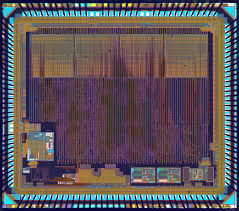 Break PIC18F2680 MCU Eeprom Memory
Break PIC18F2680 MCU Eeprom Memory
This mode is unique among the three low-power Idle modes, in that it does not disable the primary device clock when Break PIC18F2680 MCU Eeprom Memory. For timing sensitive applications, this allows for the fastest resumption of device operation with its more accurate primary clock source, since the clock source does not have to “warm-up” or transition from another oscillator when Recover Locked Chip ATMEGA128PV Binary.
PRI_IDLE mode is entered from PRI_RUN mode by setting the IDLEN bit and executing a SLEEP instruction when Crack MCU Firmware. If the device is in another Run mode, set IDLEN first, then clear the SCS bits and execute SLEEP to Decrypt Locked MCU ATMEGA128V Embedded Firmware. Although the CPU is disabled, the peripherals continue to be clocked from the primary clock source specified by the FOSC3:FOSC0 Configuration bits. The OSTS bit remains set (see below Figure).
When a wake event occurs, the CPU is clocked from the primary clock source. A delay of interval TCSD is required between the wake event and when code execution starts. This is required to allow the CPU to become ready to execute instructions. After the wake- up, the OSTS bit remains set. The IDLEN and SCS bits are not affected by the wake-up for the purpose of Dump Microcontroller ATMEGA128V Locked Code (see below Figure).
The Timer1 oscillator should already be running prior to entering SEC_IDLE mode. If the T1OSCEN bit is not set when the SLEEP instruction is executed, the SLEEP instruction will be ignored and entry to SEC_IDLE mode will not occur through Decrypt Microprocessor ATMEGA169PA Code. If the Timer1 oscillator is enabled but not yet running, peripheral clocks will be delayed until the oscillator has started. In such sit- uations, initial oscillator operation is far from stable and unpredictable operation may result.


